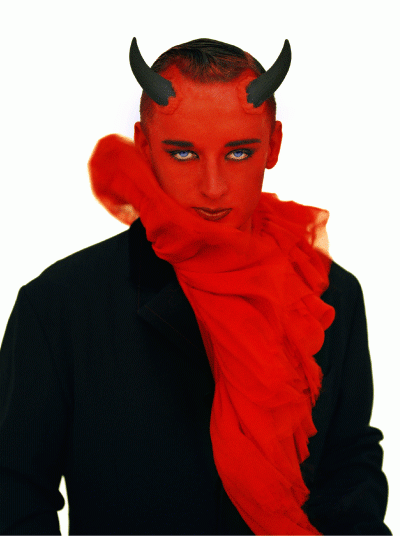
I didn’t used to like Boy George. Mostly because every time I wear a bowler hat, someone tells me I look like him. I used to take it as an insult because of, you know, the drug bloat, combined with the whole imprisoning a prostitute thing . . . It’s interesting that many straight men, whenever they see a pretty boy, often make the association with Boy George. The comparison can be a little annoying, but it’s also kind of amazing that decades after Boy George first became a star with Culture Club, his likeness is still so identifiable. He evokes a certain image, and that image is a part of both pop and gay culture’s fabric.
I became a Boy George fan after reading his memoir, Take It Like a Man. The book is full of startling and revelatory moments. It’s well-written, entertaining and gritty. It’s kiss-and-tell catharsis with a divinely confessional tone. There’s no denying that Boy George has lived a fascinating life, from a Blitz Kid squatting in London with the likes of Marilyn and Steve Strange to global superstardom, and his spiral of disgrace, self-loathing and addiction.
Take It Like a Man takes you through the music, straight men and heroin — to candidly expose the heart of a pop icon.
 Why you can trust Xtra
Why you can trust Xtra


